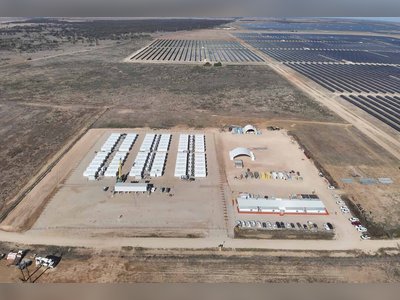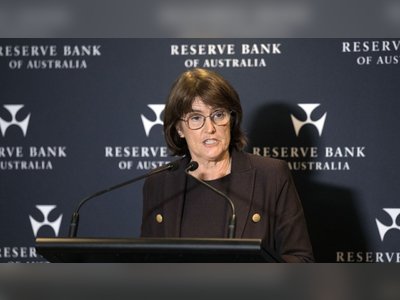Refinancing Rates Rise as Borrowers Shift from Traditional Banks
The drop in official interest rates has led to an increase in mortgage refinancing as borrowers seek better deals.
Recent data indicates a significant increase in mortgage refinancing in Australia following the first official interest rate cut in four years.
The Reserve Bank of Australia (RBA) reduced the cash rate to 4.1% last month, marking the first decrease since late 2020. In response, the digital property exchange PEXA reported an 8.4% increase in refinancing deals in February 2024 compared to the same month the previous year.
This trend has continued into March, suggesting heightened interest among borrowers in switching lenders.
While refinancing volumes remain below the record highs of early 2023, they are considerably above the pre-COVID averages.
PEXA’s chief economist, Julie Toth, attributed the increase in refinancing activity to the RBA's recent rate cut and noted that consumer behavior has shifted, with many Australians now actively seeking better loan options quickly in response to interest rate changes.
Toth highlighted that the recent surge reflects a broader competition within the financial services sector.
The data reveals mixed results across Australia’s mainland states.
Western Australia saw the most significant spike in refinancing, increasing 29% year-on-year in February, followed by Queensland at 16% and South Australia at 14%.
New South Wales recorded a more modest increase of 4%, while Victoria experienced a 1% decline.
In tandem with the RBA's interest rate cut, there has been a marked increase in competition among banks.
Last week, Westpac lowered its new digital loan rate to 5.84%, matching the lowest advertised variable rate offered by major competitors ANZ Bank, according to industry analysis from Canstar.
This adjustment is aimed at attracting new borrowers, although it does not impact existing customers.
Market analysts note that competition in mortgage lending has generally softened since early 2023, when many COVID-era fixed-rate loans were maturing, prompting banks to offer attractive cash-back deals and discounts to lure borrowers.
Nevertheless, some indicators suggest a potential uptick in competitive pricing.
Jarden analyst Matthew Wilson highlighted recent pricing adjustments by Westpac, NAB, and Suncorp, signaling a potential resurgence of competitive pressure, although he cautioned that there is little evidence of an imminent mortgage pricing war.
Sally Tindall, data insights director at Canstar, emphasized that changes in the cash rate typically lead borrowers to reassess their mortgage options, resulting in sustained high refinancing activity.
In 2024, loans worth over $206 billion were refinanced despite stable official rates throughout the year.
Many banks now offer lower advertised rates specifically for digital home loans, which are less costly for banks to manage.
As competition among major banks intensifies, three of the big four are engaged in a 'digital arms race', striving to capture segments of the market that favor online transactions.
The Reserve Bank of Australia (RBA) reduced the cash rate to 4.1% last month, marking the first decrease since late 2020. In response, the digital property exchange PEXA reported an 8.4% increase in refinancing deals in February 2024 compared to the same month the previous year.
This trend has continued into March, suggesting heightened interest among borrowers in switching lenders.
While refinancing volumes remain below the record highs of early 2023, they are considerably above the pre-COVID averages.
PEXA’s chief economist, Julie Toth, attributed the increase in refinancing activity to the RBA's recent rate cut and noted that consumer behavior has shifted, with many Australians now actively seeking better loan options quickly in response to interest rate changes.
Toth highlighted that the recent surge reflects a broader competition within the financial services sector.
The data reveals mixed results across Australia’s mainland states.
Western Australia saw the most significant spike in refinancing, increasing 29% year-on-year in February, followed by Queensland at 16% and South Australia at 14%.
New South Wales recorded a more modest increase of 4%, while Victoria experienced a 1% decline.
In tandem with the RBA's interest rate cut, there has been a marked increase in competition among banks.
Last week, Westpac lowered its new digital loan rate to 5.84%, matching the lowest advertised variable rate offered by major competitors ANZ Bank, according to industry analysis from Canstar.
This adjustment is aimed at attracting new borrowers, although it does not impact existing customers.
Market analysts note that competition in mortgage lending has generally softened since early 2023, when many COVID-era fixed-rate loans were maturing, prompting banks to offer attractive cash-back deals and discounts to lure borrowers.
Nevertheless, some indicators suggest a potential uptick in competitive pricing.
Jarden analyst Matthew Wilson highlighted recent pricing adjustments by Westpac, NAB, and Suncorp, signaling a potential resurgence of competitive pressure, although he cautioned that there is little evidence of an imminent mortgage pricing war.
Sally Tindall, data insights director at Canstar, emphasized that changes in the cash rate typically lead borrowers to reassess their mortgage options, resulting in sustained high refinancing activity.
In 2024, loans worth over $206 billion were refinanced despite stable official rates throughout the year.
Many banks now offer lower advertised rates specifically for digital home loans, which are less costly for banks to manage.
As competition among major banks intensifies, three of the big four are engaged in a 'digital arms race', striving to capture segments of the market that favor online transactions.
AI Disclaimer: An advanced artificial intelligence (AI) system generated the content of this page on its own. This innovative technology conducts extensive research from a variety of reliable sources, performs rigorous fact-checking and verification, cleans up and balances biased or manipulated content, and presents a minimal factual summary that is just enough yet essential for you to function as an informed and educated citizen. Please keep in mind, however, that this system is an evolving technology, and as a result, the article may contain accidental inaccuracies or errors. We urge you to help us improve our site by reporting any inaccuracies you find using the "Contact Us" link at the bottom of this page. Your helpful feedback helps us improve our system and deliver more precise content. When you find an article of interest here, please look for the full and extensive coverage of this topic in traditional news sources, as they are written by professional journalists that we try to support, not replace. We appreciate your understanding and assistance.











